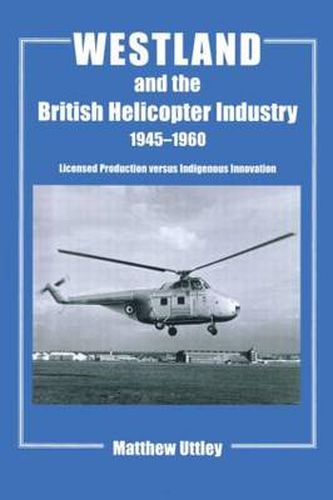Readings Newsletter
Become a Readings Member to make your shopping experience even easier.
Sign in or sign up for free!
You’re not far away from qualifying for FREE standard shipping within Australia
You’ve qualified for FREE standard shipping within Australia
The cart is loading…






Between 1945 and 1960, British government policy was to foster an indigenous helicopter research capability. In parallel, Westland Aircraft Limited focused on licensed production of foreign helicopter technology developed in the USA. While other companies subsumed under British government industrial policy failed to enter commercial production, Westland, through the use of this alternative focus, emerged as Britain’s sole helicopter manufacturer in 1960. This work shows how Westland dominated British helicopter production and why government funding and support failed to generate competitive all-British alternatives. The text evaluates historiographic assumptions about the purported failure of British aircraft procurement during the early post-war period as well as considering the scope and limitations of licensed production as a government-mandated procurement strategy.
$9.00 standard shipping within Australia
FREE standard shipping within Australia for orders over $100.00
Express & International shipping calculated at checkout
Between 1945 and 1960, British government policy was to foster an indigenous helicopter research capability. In parallel, Westland Aircraft Limited focused on licensed production of foreign helicopter technology developed in the USA. While other companies subsumed under British government industrial policy failed to enter commercial production, Westland, through the use of this alternative focus, emerged as Britain’s sole helicopter manufacturer in 1960. This work shows how Westland dominated British helicopter production and why government funding and support failed to generate competitive all-British alternatives. The text evaluates historiographic assumptions about the purported failure of British aircraft procurement during the early post-war period as well as considering the scope and limitations of licensed production as a government-mandated procurement strategy.